
TRAVIS PICKING
Travis Picking in C (part 3/4)
Adding syncopation to your travis picking patterns
See the previous articles on Music Theory – strongly recommended to read these first!
The first lesson breaks down the thumb and bass pattern of Travis Picking
The second lesson plays melodies with full, half, quarter and sixteenth notes.
Now it’s time for lesson 3
This lesson adds the concept of syncopation to our Travis Picking toolbox.
Travis Picking with Syncopation
When we talk about syncopation, we mean the emphasis on notes that are not on the beat.
Look at the example in the tab below. This first exercise shows a pattern in C with the first high/melody note played with the C bass note and the second high/melody note (open G string) is played ‘between’ two bass notes.
Listening to the audio will make this even more clear.
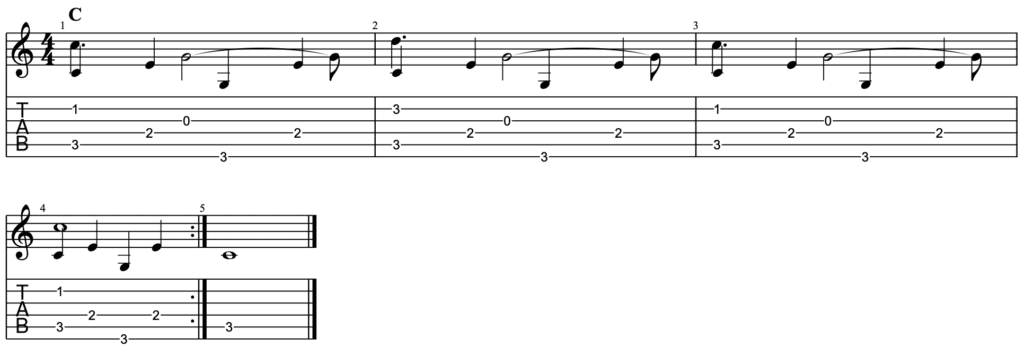
Exercise 1 Audio – Slow
Exercise 1 Audio – Fast
Travis Picking with 2 in-between notes
This exercise builds on the previous.
Now we see the first melody note on the bass and the next two are in-between bass notes.
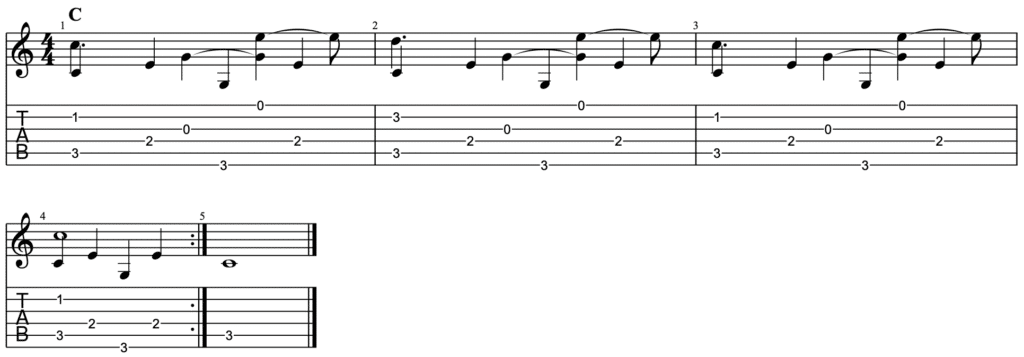
Exercise 2 Audio – Slow
Exercise 2 Audio – Fast
Travis Picking with all syncopated notes
In this example, all of the notes are in-between bass notes.
When you practice something like this at first, it’s just incredibly weird. You keep playing it. It becomes natural after a while.
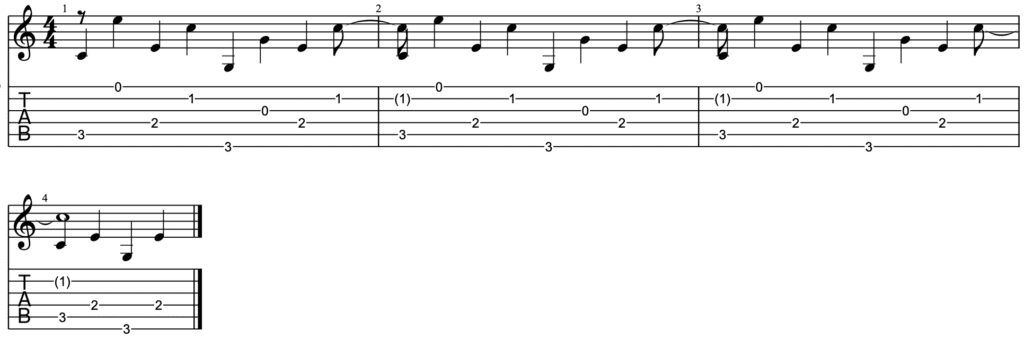
Exercise 3 Audio Slow
Exercise 3 Audio Fast
Travis Picking - syncopation & 1/8th notes
In bar 1 below, we have a syncopation (in-between) melody note as we have seen previously.
In bar 2, we have a 1/8 note pattern.
The main difference is that the first bar “leaves space” between that first note and second melody note. The second bar is four eighth notes in a row!
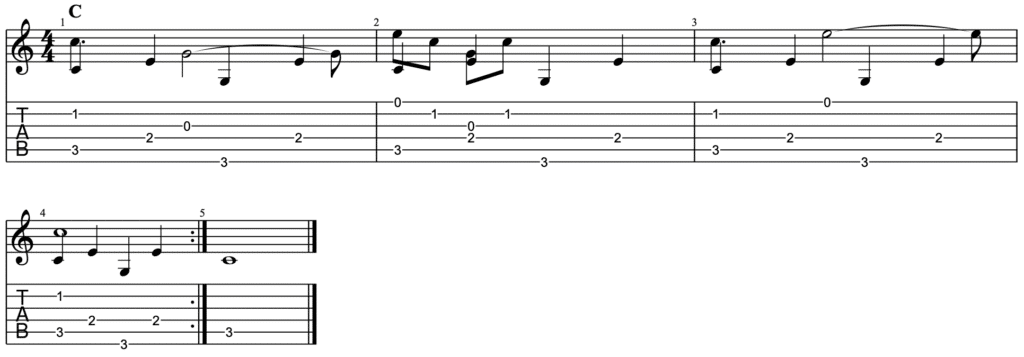
Exercise 4 Audio Slow
Exercise 4 Audio Fast
Travis Picking - Musical example
Now we mix a few different elements into a more musical example.
This is your reward – enjoy it!
If it’s been a struggle, then go back and play to the slower audio files and build up to this point. This is advanced stuff, but will really open your fingers and your bass/melody independence.
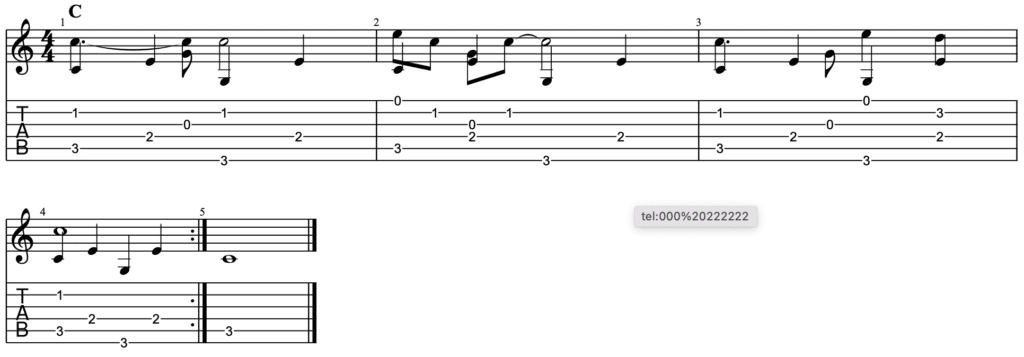
Exercise 5 Audio Slow
Exercise 5 Audio Fast
summary
We have built on the last two Travis Picking lessons by adding the concept of syncopation (playing on the off-beats).
These exercises get progressively harder and don’t be afraid to work your way through them slowly.
Get the Learn Fingerpicking Book
Register for the newsletter and I will send you this book (105 pages) and a free lesson once a month.
This is the ideal resource for complete beginners who wish to learn guitar.
